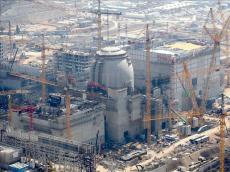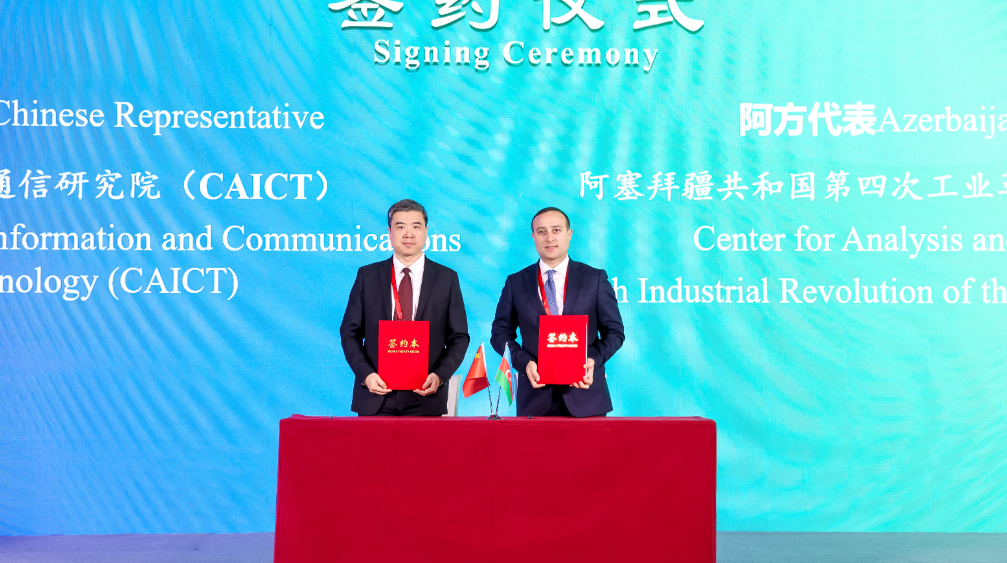|
|
TODAY.AZ / World news
Over 30 countries collaborate to realize fusion energy generation
28 February 2024 [09:00] - TODAY.AZ

More than 30 countries are collaborating in southern France to realize fusion energy generation for tomorrow's world, Azernews reports, citing Anadolu Agency.
The International Thermonuclear Experimental Reactor (ITER) project aims to build the world's largest tokamak, a magnetic fusion device, to prove that it is possible to utilize nuclear fusion at an industrial level.
Laban Coblentz, ITER's head of communication, told Anadolu that an ITER baseline from 2016 predicted that the First Plasma, or the machine's first operational test using normal hydrogen rather than fusion, would occur in 2025. This would be followed by a series of stages of additional assembly and operation, which would culminate in the start of fusion operations in 2035.
However, the first baseline experienced setbacks due to the COVID-19 pandemic, as well as technical challenges with some of ITER's many first-of-a-kind components and manufacturing mistakes that required repairs.
Therefore, a new baseline proposal will be submitted to the ITER Council, ITER's oversight body, in June 2024.
"We are developing a new baseline and expect the initial plasma to be delayed. Nevertheless, we anticipate that the scope of initial plasma will be significantly expanded by the time we begin operations. Our goal is to stay largely on track for the start of fusion operations," Coblentz explained.
Nuclear fusion is seen as a large-scale and clean energy source because it does not emit carbon, and the nature of the fusion reaction cannot lead to a Chernobyl-style meltdown accident.
Regular nuclear reactors usually generate energy through nuclear fission, which is the process of breaking down the atoms of a heavy element into lighter ones.
Fusion energy, in contrast, refers to the process of combining two lighter nuclei to form a heavier nucleus, resulting in the release of a significant amount of energy.
Since 1950, scientists have been studying nuclear fusion, which happens at the core of the sun and stars and emits large amounts of energy around them thanks to the fusion explosions that are constantly occurring.
Besides ITER, countries such as the USA, China, Japan, Russia, South Korea, Canada, etc., see fusion energy as a promising energy source, carry out important research in this field, and provide support to various projects for the development of nuclear fusion technology.
Coblentz is a proponent of this energy source as a replacement for fossil fuels.
"If we can overcome the challenges—efficient heat removal, materials capable of withstanding fusion neutrons, efficient tritium breeding, etc.—it will be possible with fusion to supply the intensive energy needs of industry and large cities," he said.
He states that fusion has notable benefits, one of which is that it is a more abundant fuel than fission. Secondly, it is a considerably safer option given the lack of chain reactions involved. Thirdly, the quantity and complexity of fuel for fusion are much lower than for fission, and finally, it will produce much less waste.
Coblentz alleges that if successful with engineering challenges resolved, fusion plants would have relatively low operating costs, extremely low fuel costs, and likely a massive and sustained return on investment.
This is in spite of the fact that fusion has not yet demonstrated its feasibility at an industrial scale, with production costs difficult to determine and initial capital injection costs on par with fission.
He explained that "for deuterium-tritium (D-T) fusion, the fuel supply would be massive, as deuterium occurs naturally in water, including seawater, so the supply would be sufficient to meet societal needs for millions of years."
"However, the second fuel, tritium, is rare in nature. So for D-T fusion to be feasible, we need to create the tritium fuel from lithium. The way this works is that we inject a small amount of D-T gas as seed fuel to start the reaction; and then, when the fusion reaction occurs, producing neutrons, they interact with lithium embedded in the walls of the fusion reactor to create tritium, and that tritium is recovered for use as fuel," he said.
As lithium is abundant in nature, ITER hopes to process tritium on an industrial scale.
URL: http://www.today.az/news/regions/245415.html
 Print version
Print version
Connect with us. Get latest news and updates.
See Also
- 18 April 2025 [23:23]
EVs could raise carbon emissions without clean energy, international study finds - 18 April 2025 [22:50]
Kyrgyzstan and South Korea discuss bilateral relations - 18 April 2025 [22:26]
South Korea conduct large-scale night exercises on border with DPRK - 18 April 2025 [21:40]
Hyundai to halt Ioniq 5, Kona EV production on weakening overseas demand - 18 April 2025 [21:20]
Kazakhstan intends to deepen cooperation with Afghanistan and sent humanitarian aid to Kabul - 18 April 2025 [20:39]
Chinese Mainland urges Taiwan businesses to jointly resist external risks, challenges - 18 April 2025 [17:58]
Azerbaijan marks Day for Int'l Monuments and Sites - 18 April 2025 [08:00]
China ban use of words "smart" and "autonomous driving" in vehicle advertisements - 17 April 2025 [23:55]
Somalian minister praises Türkiye’s role in peace and development - 17 April 2025 [23:30]
Kia EV3 named World Car of Year at ceremony in New York
Most Popular
 Antalya Diplomacy Forum becomes center of global dialogue
Antalya Diplomacy Forum becomes center of global dialogue
 Separatists & Pashinyan - the farce continues
Separatists & Pashinyan - the farce continues
 The "parallel" worlds of Armenia
The "parallel" worlds of Armenia
 4SIM signs MoUs with Chinese institutions to boost cooperation in green and industrial technologies
4SIM signs MoUs with Chinese institutions to boost cooperation in green and industrial technologies
 Azerbaijani and Georgian Presidents hold expanded meeting over luncheon
Azerbaijani and Georgian Presidents hold expanded meeting over luncheon
 A fat, nosy and bald hint that Armenia will remove claims against Azerbaijan from the Constitution
A fat, nosy and bald hint that Armenia will remove claims against Azerbaijan from the Constitution
 Foreign diplomats tour liberated cities of Khankendi and Shusha
Foreign diplomats tour liberated cities of Khankendi and Shusha
